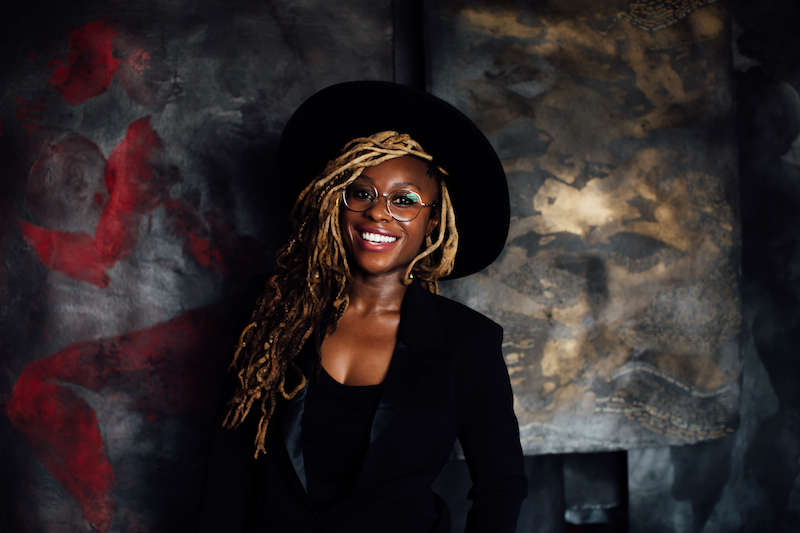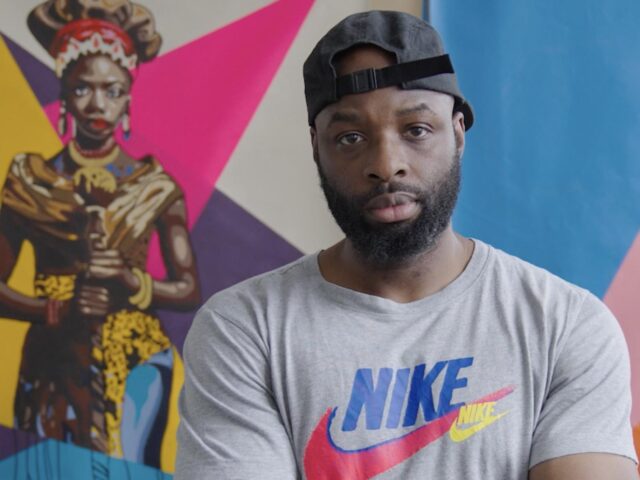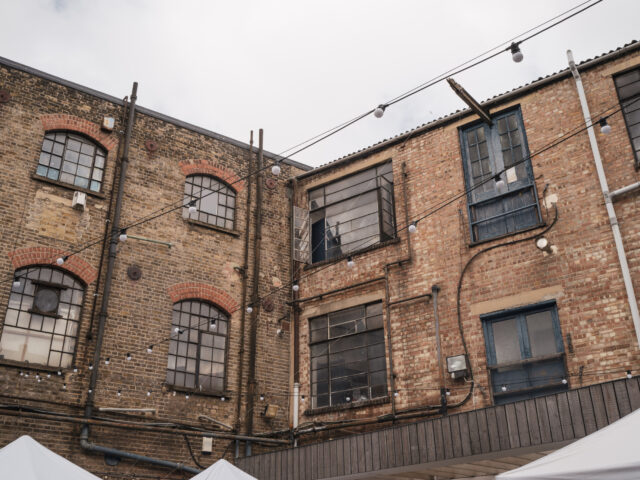Artist Spotlight: Adelaide Damoah
Adelaide Damoah is a painter and performance artist whose work incorporates the use of her body as a “living paintbrush” and explores the themes of colonialism, spirituality and feminism. This week, we caught up with Adelaide, who is currently a member of our creative community at the Lakeside Centre in Thamesmead. We found out about her practice, her plans and her recent ceramic painting video for 66 of Us, a non-profit group helping communities during the lockdown.
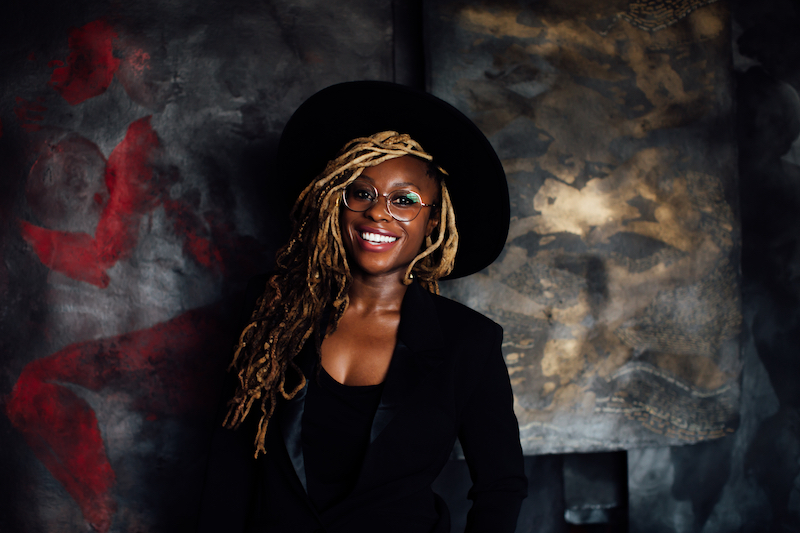
Adelaide Damoah (Image courtesy of the artist and by Jennifer Moyes)
Could you tell us a little bit about your practice?
I am a painter and performance artist working at the intersection of colonialism, spirituality and feminism. I have been a practising artist for 15 years.
How did you come to use your body within your work?
Until 2015, I was more of a traditional, figurative painter. In 2016, an artist friend called Rachel Ara critiqued a series of work I had shown in my last solo exhibition the preceding year. The works consisted of a series of portraits of two female dancers and I interweaved text on the canvas in an attempt to tell their story. Rachel said that she didn’t think the work successfully told the stories I was trying to tell. She asked me to think outside of the box in terms of my understanding of myself as an artist. Specifically, she suggested that in trying to be a traditional figurative painter, I was trying to be something I was not. She told me there were other ways of expressing my ideas and instructed me to find the way that suited me and allowed me to be my authentic self. This was, of course, difficult to hear initially. It felt like she had kicked me in the stomach! However, I absorbed everything and decided to go back to the drawing board of my practice and reevaluate everything. I researched other artists, I experimented, I talked to other artists and dealers, until one day I had a brainwave and that brain wave led me to start to tentatively work with my body—initially only in the studio. I used to film the process. This filming started to feel performative—despite the fact that it was only me and the phone with no audience. This is when the idea to perform this new way of working occurred to me. Everything changed from that point.

Into the Mind of the Coloniser (Images courtesy of the artist and by Ben Peter Catchpoole)
We really enjoyed your recent video about painting on ceramics with 66 of Us. Can you tell us more about that?
Thank you. They approached me via the agency who currently represents me — MTArt Agency. 66 of Us are a lovely not for profit who have been making masterclass videos with arts and crafts professionals from all over the country — while observing social distancing with very impressive technology. Their aim is to bring communities together through the sharing of skills and ideas. It was great fun to do. Painting on ceramics is not a big part of my practice. It started with a small project I did in February to coincide with the launch of a project I completed with Method UK, The Design Laboratory and MTArt Agency. The plate I made for the show was a recreation of the first performance piece I did in 2017 — This is Me, The Inconsistency of the Self. Recreating this special performance piece on a tiny plate was challenging and was a cool way to pass on that particular skill to the community at large. It is an activity that adults and children of all ages can partake in and you can end up with a piece of art that is both beautiful and has practical uses in the home.
Painting on Ceramics by Adelaide Damoah on 66 of Us
What are you working on at the moment?
I am excited because I just ordered a lot of new materials so that I can begin work on the second phase of my project, “Confronting Colonisation.” This is an ongoing lifetime project which consists of a lot of deep research, paintings, writing and performances. The work is based around 204 out of print books relating to the British Empire I found in 2018 which date from the 1600s up until around 1920. I am currently reading a lot of supporting material that relates to the project to prepare for making the work.
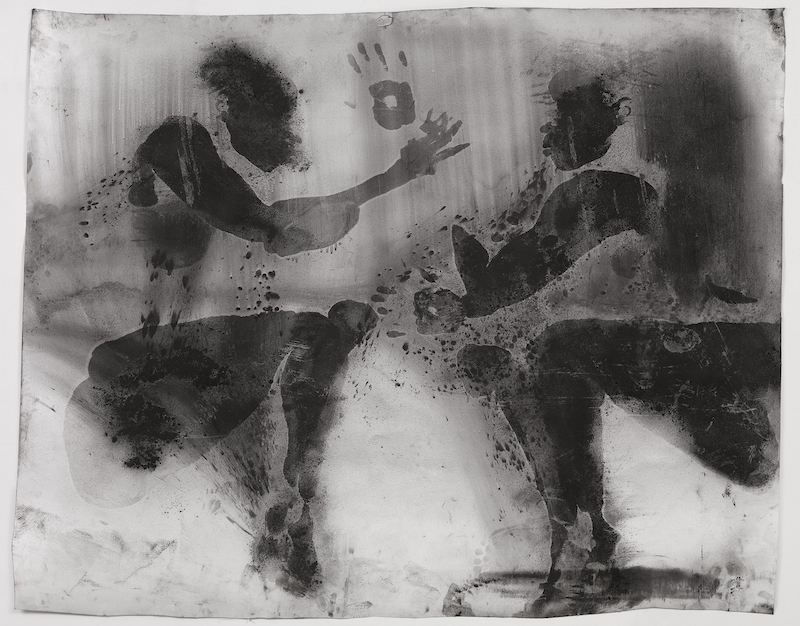
A person alone hurts. (Ɔbaako yɛ ya). Genesis series, 2018.
What does your working environment usually look like? Have you made any adaptations since the lockdown was implemented?
There is no “usual” situation in my life ever! My artistic process involves a lot of reading and research, followed by intense studio sessions. My studio can be a complete mess when I am actively working, with paintings and bits of paper everywhere. The reading part of my process takes place at home in my living room where I have access to a rather large collection of books. During this part of the process, you can find me sitting on the couch in an avalanche of books with a notebook and pen in hand. Lockdown has not changed this. The only difference is that I am now home or in the studio all the time. Before the lockdown, I travelled a considerable amount and spent a lot of time going to various meetings about projects and shows. One thing that the lockdown has taught me is that I can accomplish a lot, if not more by having the same meetings remotely via telephone or zoom call. I think this is something I will take with me once we get back to some semblance of normality.
How can people support your practice at this time?
This is tough. Lockdown has meant that everything has been cancelled or changed. I was supposed to be having a solo exhibition with a new and exciting gallery in the heart of Mayfair called Boogie Wall Gallery. This show has now shifted to being in an online viewing room only and will hopefully move into the physical space once the restrictions have been fully lifted. Real-life exhibitions are great for sales for me as my work is far better experienced in person than online. Meaning that just like everyone else, my income is impacted significantly.
It is difficult to ask people to buy work at this time as everyone is stretched or has been impacted in some way by the situation regardless of what income bracket they are in. With that being said, many of those who would be in a position to collect my work are still continuing to collect and I read recently that online African art sales at Sotheby’s are booming despite the crisis. I would encourage those who are in a position to buy work to invest in the careers of artists like myself so that we can continue producing work.
Anyone else who is not in the same financial position but would like to support in other ways, I encourage you to follow my socials and share the work with your friends and art world professionals. Join in with discussions about the work on and offline. Watch my many live Instagram conversations and join in, participate. This kind of support keeps us together and motivated as an artistic community. Of course, being a Bow Arts artist also means I can offer work for sale via the “Own Art” scheme, which allows potential collectors to buy work with an interest-free loan.
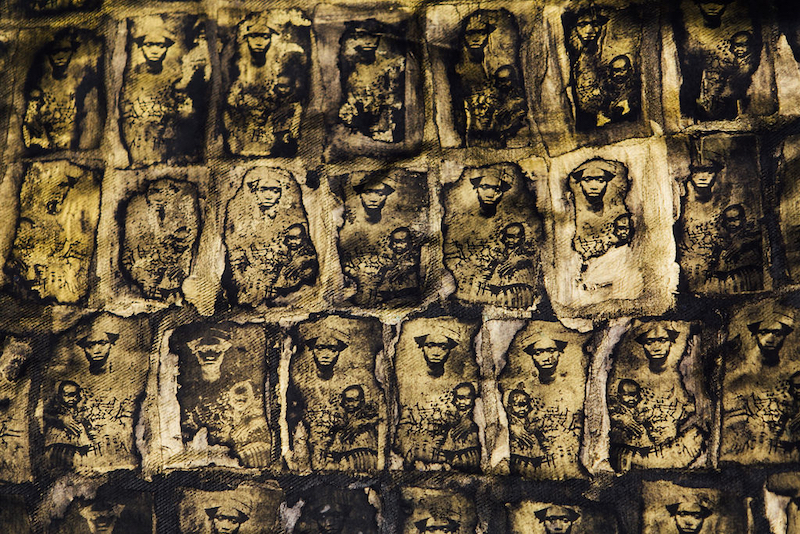
The Rebirth of Ama (detail view). Genesis series, 2018.
What are your plans for the future and is there a message that you would like to share with others?
It is difficult to plan anything too significant right now. All I can do is continue to work on my projects one day at a time while staying sane and healthy. Hopefully, an exhibition planned with Sakhiele & Me gallery in Germany still goes ahead in June. Aside from that, everything else is on hold, including a two-month residency in Canada.
I would encourage anyone reading this who is struggling with motivation, ill health and general anxiety around this pandemic and the future to practice self-care and care for those around you. It sounds cliche but it is so important.
I live alone, so being present with myself and staying connected to my community of friends and family by regularly talking on the phone and having video chats has meant everything to me. Those human connections have kept me going when I was seriously paranoid that I might have COVID-19 as well as dealing with a serious flare-up of endometriosis.
Having another craft outside of my work has also been a massive help. I crochet when I want to relax and not think about all of the madness in the world outside. So far I have made a tea cozy and a scarf! I will be making myself some slippers for my next project.
Some kind of mindfulness practice is also very important. Whether it is a regular meditation practice or prayer, nothing beats this kind of practice when it comes to calming and soothing the mind. Both have been scientifically proven to significantly reduce cortisol levels in the blood – which is the stress hormone that causes all sorts of stress-related illnesses. I meditate regularly. I have even participated in a group meditation session with two of my artist friends on a group call and it was the most beautiful calming and bonding experience. Exercise is also important for your body and your mind and has a similar impact on stress levels.
I recently set up a couple of reading groups with friends who are interested in similar books. We meet on Zoom and take it in turns to read two pages from the book we are reading. Each session lasts around an hour and a half and we discuss the section we are reading afterwards. I really value this interaction as aside from bonding with my friends, it stimulates the mind in a different way, which I appreciate.
I say all of the above to say, take extra special care of yourselves and each other while following the current government guidelines for staying safe. Finally, every single day, keep your mind focused on things that make you smile and laugh.
